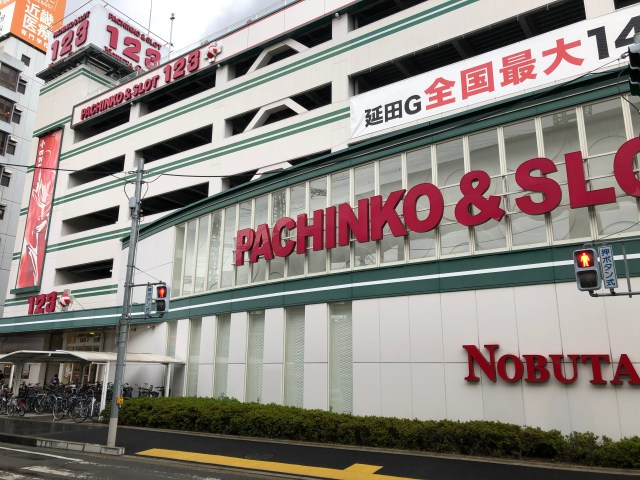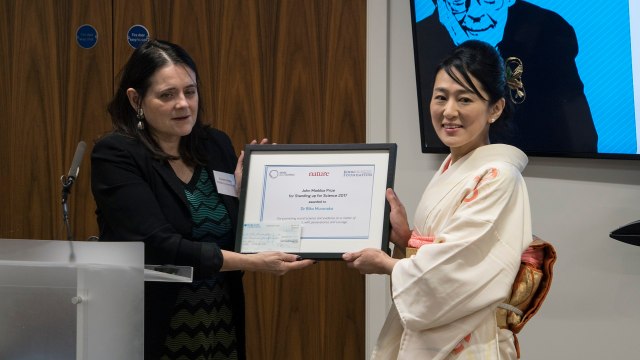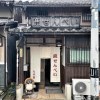
Many of pachinko’s worst qualities actually make it a relatively safe environment.
Back during the first wave of COVID-19 and the state of emergency that followed, there was a lot of ruckus about pachinko parlors in particular.
For those unfamiliar, pachinko is a Japanese pastime in which little metal balls are flung through a machine into tiny holes, and depending on the holes they land in the player is rewarded with more tiny balls which can then be converted to money through a shady but semi-legal process.
▼ Here’s an uncharacteristically pleasant rundown of the basic mechanics of the game
Pachinko parlors tend to be very enclosed spaces due to the bright lights and deafening noise inside with players often crammed side-by-side for hours on end. So when fears of a highly contagious virus arose, many looked at these establishments with concern.
The governments of Tokyo and Osaka put considerable pressure on these businesses in particular with attempts to publicly name and shame those that remained open. Now, with the second wave in full swing, and not much being done about it, pachinko parlors are still going about their business as usual. And yet, throughout all of this, not a single COVID-19 cluster has been linked to such a place.
This has led many to wonder: Why?
When referring to COVID-19 risk, the Prime Minister’s Office recommended avoiding the “Three Cs” which are Closed spaces, Crowded places, and Close-contact settings.
#COVID19 update: The experts on the novel #coronavirus stress the need to avoid three overlapping conditions. The “Three Cs” are: closed spaces, crowded places and close-contact settings. https://t.co/YYg68WBsxo (please follow the guidelines for the public use of this poster.) pic.twitter.com/dON2CasDAE
— PM's Office of Japan (@JPN_PMO) March 29, 2020
This appears to fit the environment of a pachinko parlor to a T, but does it really?
Looking at the first C, the building code states that these places must have enough ventilation to completely change the air inside from six to 10 times per hour which pretty much puts them on par with other large public spaces like department stores. While not especially amazing, it also doesn’t really fall into the category of “poor ventilation” either.
The two other Cs seem undeniable, but what makes pachinko parlors unique is what the people inside are doing – or more importantly not doing.
Unlike restaurants and shops where people leisurely engage conversation, pachinko parlors discourage such fun as it interrupts with the psuedo-gambling. Any attempt to verbally communicate with someone inside one of these places is usually thwarted by a cacophony of clanging machines and loud music.
▼ Here’s a good example of the noise levels outside and inside
What’s left is rows upon rows of people staring blankly forward at their machines and barely even opening their mouths. And therein lies the secret of pachinko parlors’ success: everyone just keeping their mouths shut.
Dr. Riko Muranaka, an outspoken and award-winning opponent of scientific misinformation weighed in on the matter: “Japanese people tend to be stuck on the three Cs but it has become clear around the world that the virus has difficulty spreading when no voices are made. Pachinko parlors, where people are rarely speaking, can be said to have a low risk of infection if everyone is wearing a mask.”
▼ Dr. Muranaka accepting the John Maddox Prize in 2017 for her efforts to dispel the belief in Japan that the HPV vaccine is harmful

Pachinko fans online rejoiced at the vindication of their favorite activities, while some former critics have had a change of heart.
“I regret having attacked them for being high-risk places.”
“I think putting them side-by-side rather than facing each other helps a lot too.”
“Really, publicly announcing the open pachinko parlors’ names just advertised them anyway. So it all worked out in the end.”
“So is anyone in the media or government going to issue an apology to the industry? I doubt it.”
“They probably just didn’t test anyone in those places.”
“I wish more people read this kind of news.”
“It’s too easy how the media brainwashes everyone. Anyone can see that by not talking the disease won’t spread if they think about it.”
In the spirit of sober analysis, this news too should be taken with a grain of salt. As one comment pointed out, testing in Japan has been notoriously sketchy and the possibility exists that coronavirus clusters in pachinko parlors have occurred but were never reported.
There is also a lot of machine-touching, smoking, and snacking going on in pachinko parlors. So, while not talking does do a lot to reduce the risk, it doesn’t eliminate it. In other words, at the very least we can say that a pachinko parlor is probably more or less just as safe as a regular place of its size like a department store when it comes to COVID-19.
Because of that, it’s true that the media and governments in Japan have been unfairly critical of pachinko parlors. Even though I personally can’t stand the places, everyone deserves to be represented fairly, and during difficult times we have to be careful not to fall into traps of misinformation.
So, I would like to formally apologize for giving pachinko parlors the stink-eye for being dens of coronavirus iniquity whenever I walk past one these past few months. From now on I will only give them stink-eyes for being obnoxious eye-sores that prey on people’s addictions and corrupt our childhood memories.
Source: Money Post, My Game News Flash
Photos ©SoraNews24 (Unless otherwise noted)
● Want to hear about SoraNews24’s latest articles as soon as they’re published? Follow us on Facebook and Twitter!


 Number of pachinko parlors in Japan decreasing rapidly, down 12 percent in two years
Number of pachinko parlors in Japan decreasing rapidly, down 12 percent in two years Pachinko parlor worker lists the three worst types of customers in Japan’s gambling dens
Pachinko parlor worker lists the three worst types of customers in Japan’s gambling dens Nearly five percent of Japanese are addicted to gambling – even though it’s still “illegal”
Nearly five percent of Japanese are addicted to gambling – even though it’s still “illegal” Proposed facial recognition system would send warning emails to families of pachinko addicts
Proposed facial recognition system would send warning emails to families of pachinko addicts Is pachinko headed for extinction in Japan? Studies reveal huge drop in players, hall operators
Is pachinko headed for extinction in Japan? Studies reveal huge drop in players, hall operators How to order snacks on a Shinkansen bullet train in Japan
How to order snacks on a Shinkansen bullet train in Japan Japan’s new difficult-to-drink-from beer glass protects your liver, but it’s a brutal experience
Japan’s new difficult-to-drink-from beer glass protects your liver, but it’s a brutal experience Demon Slayer: Kimetsu no Yaiba gets new roller coaster attractions and food at Universal Studios Japan
Demon Slayer: Kimetsu no Yaiba gets new roller coaster attractions and food at Universal Studios Japan Burger King Japan suddenly adds Dr. Pepper and Dr. Pepper floats to its menu nationwide
Burger King Japan suddenly adds Dr. Pepper and Dr. Pepper floats to its menu nationwide New Pokémon ice cream, dessert drinks, and cool merch coming to Baskin-Robbins Japan【Pics】
New Pokémon ice cream, dessert drinks, and cool merch coming to Baskin-Robbins Japan【Pics】 New Nintendo Lego kit is a beautiful piece of moving pixel art of Mario and Yoshi【Photos】
New Nintendo Lego kit is a beautiful piece of moving pixel art of Mario and Yoshi【Photos】 New samurai glasses are Japan’s latest weird must-have souvenir
New samurai glasses are Japan’s latest weird must-have souvenir Kyoto Tower mascot termination reveals dark side behind cute Japanese characters
Kyoto Tower mascot termination reveals dark side behind cute Japanese characters Hello, cosmetics! Clinique teams up with Hello Kitty this summer for first-time collaboration
Hello, cosmetics! Clinique teams up with Hello Kitty this summer for first-time collaboration This Nara workshop has been making deer crackers for more than 100 years and offers tours【Photos】
This Nara workshop has been making deer crackers for more than 100 years and offers tours【Photos】 Nintendo history you can feel – Super NES, N64, and GameCube controllers become capsule toys
Nintendo history you can feel – Super NES, N64, and GameCube controllers become capsule toys “The most Delicious Cup Noodle in history” – Japan’s French Cup Noodle wins our heart【Taste test】
“The most Delicious Cup Noodle in history” – Japan’s French Cup Noodle wins our heart【Taste test】 Starbucks releases a cute Frappuccino and Unicorn Cake…but not in Japan
Starbucks releases a cute Frappuccino and Unicorn Cake…but not in Japan McDonald’s Japan’s Soft Twist Tower: A phantom ice cream only sold at select branches
McDonald’s Japan’s Soft Twist Tower: A phantom ice cream only sold at select branches Yabai Ramen: What makes this Japanese ramen so dangerous?
Yabai Ramen: What makes this Japanese ramen so dangerous? Finally! Nintendo Japan expands Switch 8-bit controller sales to everybody, Online member or not
Finally! Nintendo Japan expands Switch 8-bit controller sales to everybody, Online member or not Japanese government wants to build luxury resorts in all national parks for foreign tourists
Japanese government wants to build luxury resorts in all national parks for foreign tourists To combat declining birth rate, Japan to begin offering “Breeding Visas” to foreigners
To combat declining birth rate, Japan to begin offering “Breeding Visas” to foreigners 10 things you should buy at 7-Eleven in Japan
10 things you should buy at 7-Eleven in Japan Studio Ghibli releases anime heroine cosplay dresses that are super comfy to wear
Studio Ghibli releases anime heroine cosplay dresses that are super comfy to wear Woman charged for driving suitcase without a license in Osaka
Woman charged for driving suitcase without a license in Osaka Studio Ghibli unveils My Neighbour Totoro miniature house model
Studio Ghibli unveils My Neighbour Totoro miniature house model Kyoto experiencing problems with foreign tourists not paying for bus fares, but not on purpose
Kyoto experiencing problems with foreign tourists not paying for bus fares, but not on purpose Fighting mild hunger with a Japanese soda that turns into jelly in the stomach【Taste test】
Fighting mild hunger with a Japanese soda that turns into jelly in the stomach【Taste test】 Studio Ghibli’s Howl’s Moving Castle tapestry unveiled in Japan for first time
Studio Ghibli’s Howl’s Moving Castle tapestry unveiled in Japan for first time McDonald’s new Happy Meals offer up cute and practical Sanrio lifestyle goods
McDonald’s new Happy Meals offer up cute and practical Sanrio lifestyle goods Sales of Japan’s most convenient train ticket/shopping payment cards suspended indefinitely
Sales of Japan’s most convenient train ticket/shopping payment cards suspended indefinitely Sold-out Studio Ghibli desktop humidifiers are back so Totoro can help you through the dry season
Sold-out Studio Ghibli desktop humidifiers are back so Totoro can help you through the dry season Japanese government to make first change to romanization spelling rules since the 1950s
Japanese government to make first change to romanization spelling rules since the 1950s Foreigner’s request for help in Tokyo makes us sad for the state of society
Foreigner’s request for help in Tokyo makes us sad for the state of society Ghibli founders Toshio Suzuki and Hayao Miyazaki contribute to Japanese whisky Totoro label design
Ghibli founders Toshio Suzuki and Hayao Miyazaki contribute to Japanese whisky Totoro label design Doraemon found buried at sea as scene from 1993 anime becomes real life【Photos】
Doraemon found buried at sea as scene from 1993 anime becomes real life【Photos】 Tokyo’s most famous Starbucks is closed
Tokyo’s most famous Starbucks is closed Princesses, fruits, and blacksmiths: Study reveals the 30 most unusual family names in Japan
Princesses, fruits, and blacksmiths: Study reveals the 30 most unusual family names in Japan Trial begins in the case of Mario Kart v. Mari Car
Trial begins in the case of Mario Kart v. Mari Car Angry customer smashes pachinko machines with hammer 【Video】
Angry customer smashes pachinko machines with hammer 【Video】 Security guard arrested in Shizuoka for abandoning 13 liters of urine at pachinko parlor
Security guard arrested in Shizuoka for abandoning 13 liters of urine at pachinko parlor Check out the one-month electric bills for Tokyo Tower, Skytree and more!
Check out the one-month electric bills for Tokyo Tower, Skytree and more! Slot machine’s proposed logo suspiciously familiar to a classic video game
Slot machine’s proposed logo suspiciously familiar to a classic video game What are the most and least attractive hobbies for Japanese men and women? Survey investigates
What are the most and least attractive hobbies for Japanese men and women? Survey investigates Is nothing sacred? Line crossed as beloved anime Captain Tsubasa endorses pseudo-gambling
Is nothing sacred? Line crossed as beloved anime Captain Tsubasa endorses pseudo-gambling Foreigner’s “prank” video of proposing to random Japanese girls is wrong in so many ways
Foreigner’s “prank” video of proposing to random Japanese girls is wrong in so many ways New GU Pokémon collaboration: Worth the risk of catching coronavirus?
New GU Pokémon collaboration: Worth the risk of catching coronavirus? 23 people arrested in Aichi for operating and using illegal casino during coronavirus lockdown
23 people arrested in Aichi for operating and using illegal casino during coronavirus lockdown Man tries something unique to appease the pachinko gods –- totally worth it?
Man tries something unique to appease the pachinko gods –- totally worth it? Over 500 karaoke boxes close due to Covid-19, dealing historic blow to the industry
Over 500 karaoke boxes close due to Covid-19, dealing historic blow to the industry Hot spring in Gunma Prefecture found to reduce COVID-19 infectivity by over 90 percent
Hot spring in Gunma Prefecture found to reduce COVID-19 infectivity by over 90 percent Studio Ghibli Museum closes due to coronavirus fears
Studio Ghibli Museum closes due to coronavirus fears “Protect the Nation from NHK Party” becomes “Protect the Nation from Old Parties Party”
“Protect the Nation from NHK Party” becomes “Protect the Nation from Old Parties Party” Moving to Tokyo? Here are the three best, most reasonable neighborhoods to live in
Moving to Tokyo? Here are the three best, most reasonable neighborhoods to live in
Leave a Reply